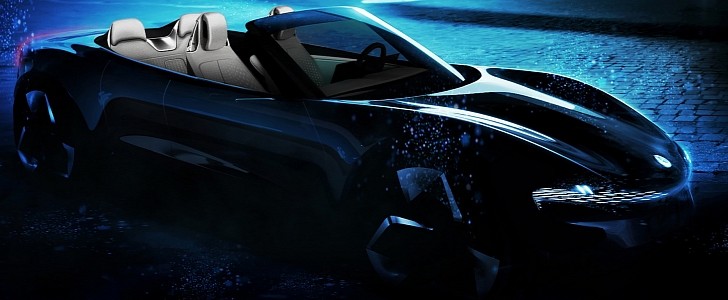If you have never seen a four-door convertible, do not blame yourself. They are rare because they are almost impossible to make. Structurally speaking, they are doomed to twist at the slightest terrain variation. Yet, Henrik Fisker wants the Ronin to have four doors and a retractable roof. The explanation for that may lie in its structural battery pack.
There may be an exception we are not aware of, but the only four-door convertible vehicles ever made used body-on-frame structures. In other words, torsional stiffness did not depend on the body itself but instead on the element that sustained it. Unibody designs would have a really hard time with the four-door convertible concept. Yet, this is what the Fisker Ronin seems to be.
Costing “just under $200,000” could already suggest that it would have a CFRP (carbon-fiber-reinforced plastic) body. After learning that Fisker wants it to be a four-door convertible electric car, that is practically mandatory, especially considering it will need to have a low weight to achieve the long ranges the designer said his company aimed for with the Ronin. Again, that alone would not be enough to create a vehicle that would not twist like an open shoebox. That’s where the structural battery pack fits in.
These components are naturally heavy and compact. The closer the cells can be, the higher the energy density. Some companies even have the batteries working as structural components themselves in the CTP (cell-to-pack) construction method. If the battery pack will also play a structural role in the body, it must be reinforced to resist all the forces the car body will have to endure. And this is not the only massive engineering challenge the project will present.
First of all, the retractable roof will have to fit in what seems to be a rather small trunk compartment. After saying it would have 550 miles of range, Fisker said the engineering target is for 600 miles. That suggests the car would need to be as light as possible, something that the retractable roof will hurt as much as the battery pack’s weight. With three motors, it aims for an acceleration time from 0 to 60 mph (97 kph) close to 2 seconds. This has a clear target: beating the second-generation Tesla Roadster, which is also just a promise at this point.
Either the people involved with the idea of this electric four-door convertible are highly excited or terrified of everything they will have to get right. If the prototype really shows up by August 2023, we’ll have the chance to see how that went.
Costing “just under $200,000” could already suggest that it would have a CFRP (carbon-fiber-reinforced plastic) body. After learning that Fisker wants it to be a four-door convertible electric car, that is practically mandatory, especially considering it will need to have a low weight to achieve the long ranges the designer said his company aimed for with the Ronin. Again, that alone would not be enough to create a vehicle that would not twist like an open shoebox. That’s where the structural battery pack fits in.
These components are naturally heavy and compact. The closer the cells can be, the higher the energy density. Some companies even have the batteries working as structural components themselves in the CTP (cell-to-pack) construction method. If the battery pack will also play a structural role in the body, it must be reinforced to resist all the forces the car body will have to endure. And this is not the only massive engineering challenge the project will present.
First of all, the retractable roof will have to fit in what seems to be a rather small trunk compartment. After saying it would have 550 miles of range, Fisker said the engineering target is for 600 miles. That suggests the car would need to be as light as possible, something that the retractable roof will hurt as much as the battery pack’s weight. With three motors, it aims for an acceleration time from 0 to 60 mph (97 kph) close to 2 seconds. This has a clear target: beating the second-generation Tesla Roadster, which is also just a promise at this point.
Either the people involved with the idea of this electric four-door convertible are highly excited or terrified of everything they will have to get right. If the prototype really shows up by August 2023, we’ll have the chance to see how that went.
We are excited to announce the #ProjectRonin! The all-electric sport GT is engineered to deliver the world's longest range for a production EV with the ultimate in high performance, and will revive the four-door convertible. A redefinition of a luxury sports car of the future! pic.twitter.com/yMm7ztWtDx
— Fisker Inc. (@FiskerInc) May 5, 2022










